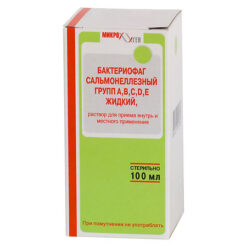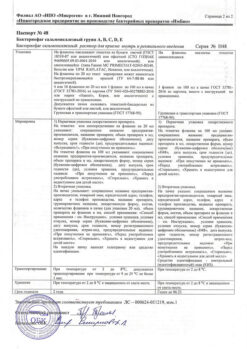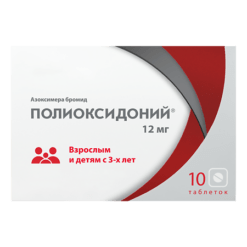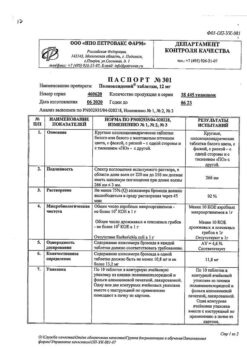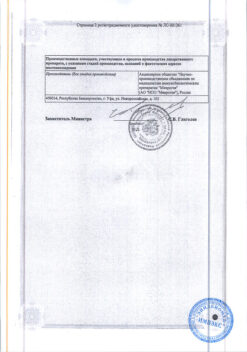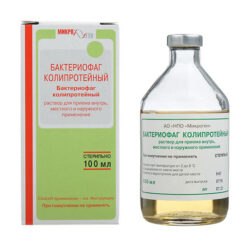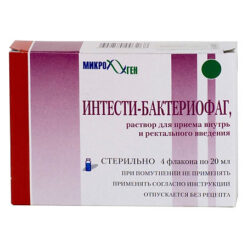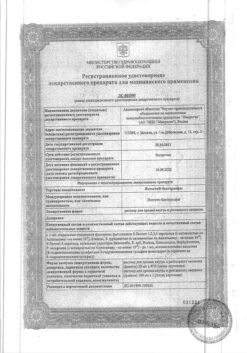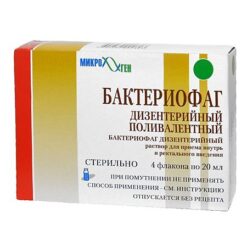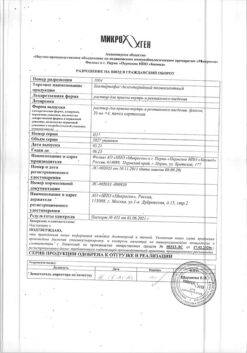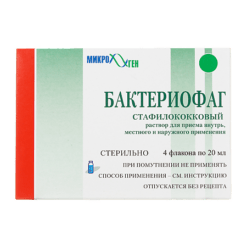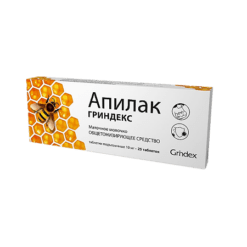No products in the cart.
Menactra, 0.5 ml/dose 0.5 ml
€1.00
Out of stock
(E-mail when Stock is available)
Description
A combined preparation containing B-group vitamins and lidocaine.
The B-group neurotropic vitamins have beneficial effects on inflammatory and degenerative diseases of the nerves and the motor system. They are not used to eliminate deficiency conditions, but in high doses they have analgesic properties, contribute to increased blood flow, normalize the nervous system and the process of hematopoiesis (vitamin B12).
Thiamine (vitamin B1) plays a key role in the processes of carbohydrate metabolism, which are critical in the metabolic processes of nervous tissue, as well as the Krebs cycle with subsequent participation in the synthesis of thiamine pyrophosphate and ATP. Pyridoxine (vitamin B6) is involved in protein metabolism, and partially in metabolism of carbohydrates and fats. The physiological function of both vitamins (B1 and B6) is to potentiate each other’s action, manifesting itself in a positive effect on the nervous, neuromuscular and cardiovascular systems.
The cyanocobalamin (vitamin B12) is involved in the synthesis of myelin sheath, stimulates hematopoiesis, reduces pain associated with damage to the peripheral nervous system and stimulates nucleic metabolism through the activation of folic acid.
Lidocaine is a local anesthetic agent, causes all types of local anesthesia.
Indications
Indications
-Prevention of invasive meningococcal infection caused by N. meningitidis serogroups A, C, Y and W-135 in persons aged 2 to 55 years.
Composition
Composition
*each polysaccharide is conjugated with diphtheria anatoxin. The protein content of diphtheria anatoxin in the inoculation dose is about 48 µg.
Excipients: sodium chloride 4.35 mg, sodium hydrophosphate 0.348 mg, sodium dihydrophosphate monohydrate 0.352 mg, d/i water up to 0.5 ml.
How to take, the dosage
How to take, the dosage
The vaccine is administered once in a dose of 0.5 ml.
The vaccine should be administered intramuscularly, preferably in the deltoid muscle of the shoulder.
Precautionary Practices
Before the vaccine is administered, necessary precautions should be taken to prevent serious adverse reactions, which include reviewing the patient’s vaccination history, determining if there are any contraindications to immunization and evaluating the patient’s current health status.
The vaccine is administered under the supervision of a healthcare professional, and the necessary antishock therapy (such as epinephrine hydrochloride solutions (1:1000) and glucocorticosteroids for injection) must be available in the room where the vaccination is given.
There have been cases of fainting after administration of Menactra vaccine. Arrangements should be made to prevent injuries associated with fainting as well as medical care for fainting.
Interaction
Interaction
The Menactra vaccine was used concomitantly with a polysaccharide vaccine to prevent typhoid fever and with an adsorbed vaccine containing tetanus and diphtheria toxoid for use in adults (Td), aged 18-55 years and 11-17 years, respectively.
The BCG vaccine should not be used at the same time as Menactra vaccine.
The vaccines should always be given in different parts of the body, using separate syringes for each.
Special Instructions
Special Instructions
Vaccination is especially indicated for the following groups at high risk for meningococcal disease:
– individuals who have had direct contact with patients infected with meningococcal serogroups A, C, Y, or W-135 (in the family or in closed institutions);
Persons with deficiency of properdin and complement components;
Persons with functional or anatomic asplenia;
– tourists and people traveling to hyperendemic areas for meningococcal infection, such as sub-Saharan Africa;
– employees of research, industrial and clinical laboratories who are regularly exposed to N. meningitidis in solutions capable of forming an aerosol;
– students at various universities, and especially those living in dormitories or apartment-type hotels;
– conscripts and recruits.
Menactra vaccine should not be given intravenously, subcutaneously, or intradermally because there are no data on the safety and effectiveness of the vaccine when given subcutaneously, intravenously, or intradermally.
Menactra vaccine must not be mixed with other vaccines or products in the same syringe.
The use of the vaccine in persons with thrombocytopenia or clotting disorders has not been studied. As with other intramuscularly administered vaccines, the benefit-risk ratio of the vaccine should be evaluated in those with an increased risk of bleeding from intramuscular injection.
The risk of Guillain-Barré syndrome (GBS) after Menactra vaccination was evaluated in a post-marketing retrospective cohort study. Cases of SBS characterized by a time association with Menactra vaccine administration were described. Individuals who have been previously diagnosed with SBS may be at increased risk of developing this condition after Menactra vaccine administration. The decision to use Menactra in this situation should be made after evaluating the potential benefits and risks.
The vaccine is not indicated for the prevention of meningitis caused by other microorganisms, or for the prevention of invasive meningococcal disease caused by serogroup B meningococci.
In people with compromised immune status or on immunosuppressive therapy, there may be a reduced immune response to Menactra vaccine administration.
As with any vaccination, protective immunity may not occur in all 100% of those vaccinated.
The health care provider or treating physician before administering the vaccine should inform the patient, their parents, guardians, or other responsible adults about the possible benefits and risks to the patient of the vaccine.
The effect on driving and operating ability
There have been no studies to study the effect of the vaccine on driving and operating ability.
Contraindications
Contraindications
acute infectious or noninfectious diseases, exacerbation of chronic diseases (in these cases the vaccine is given after recovery or in remission).
Side effects
Side effects
The nature and frequency of side effects found in the studies varied depending on the age of the vaccinees. In clinical trials in children aged 2 to 10 years, the most frequent side effects were soreness and redness at the injection site, irritability, diarrhea, somnolence, and anorexia; in adolescents aged 11 to 18 years and in adults aged 18 to 55 years, the most frequent side effects were soreness at the injection site, headache, and fatigue. The incidence of the following side effects is classified according to the World Health Organization (WHO) recommendations and includes the following categories: very common: â¥10%; common: â¥1% and < 10%; infrequent: â¥0.1% and < 1%; rare: â¥0.01% and < 0.1%; very rare: < 0.01%; frequency unknown: cannot be determined from available data.
Children aged 2 to 10 years
The majority of reported local and general reactions observed within 7 days of vaccination were mild. In addition, the following abnormalities were noted:
Metabolic and nutritional disorders
Very common or frequent: decreased appetite
Nervous system disorders
Very often or often: drowsiness
Gastrointestinal disorders
Very often: Diarrhea
Often: vomiting
Skin and subcutaneous tissue side
Often: rash, urticaria
Musculoskeletal and connective tissue disorders
Often: Arthralgia
General disorders and disorders at the injection site
Very often: soreness and tightness at the injection site
Very often or often: Irritability, redness at the injection site, swelling at the injection site, fever
Persons aged 11-55 years
Most of the reported local and general reactions observed within 7 days of vaccination were mild. In addition, the following abnormalities were noted:
Metabolic and nutritional disorders
Very common or frequent: decreased appetite
Nervous system disorders
Very often: headache
Gastrointestinal disorders
Very often or often: diarrhea
Often: vomiting
Skin and subcutaneous tissue side
Often: rash
Musculoskeletal and connective tissue side
Very common: arthralgia
General disorders and disorders at the injection site
Very often: pain, thickening, redness and swelling at the injection site, increased fatigue, general malaise
Often: chills, fever
The following adverse events after administration have been additionally reported in the post-marketing period (the frequency of these events and their causal relationship to the use of Menactra vaccine cannot be determined at this time):
Immune system disorders
Hypersensitivity reactions such as anaphylactic shock, anaphylactoid reactions, stridorotic breathing, difficulty breathing, upper respiratory edema, urticaria, skin redness, skin itching. decreased blood pressure.
Nervous system disorders
Guillain-Barré syndrome (GBS). paresthesias, loss of consciousness (due to autonomic nervous system dysregulation), dizziness, seizures, facial nerve palsy, acute disseminated encephalomyelitis, transverse myelitis.
Musculoskeletal and connective tissue side
Myalgia
Post-marketing study
The risk of SGB after administration of the Menactra vaccine was evaluated in a U.S. retrospective cohort study using an electronic health care database of 9,578,688 patients aged 11-18 years, of whom 1,431,906 (15%) received the Menactra vaccine. None of the patients described in the 72 reports of medically confirmed cases of SGB received the Menactra vaccine within 42 days before the onset of symptoms. An additional 129 potential cases of SBS were not medically confirmed or were excluded from the analysis because of missing or insufficient medical information. In an analysis that accounted for missing data, the estimated additional risk of SGB ranged from 0 to 5 additional cases of SGB per 1,000,000 vaccinated people within 6 weeks of vaccination.
Additional information
| Shelf life | 2 years. |
|---|---|
| Conditions of storage | At a temperature of 2 to 8°C. Do not freeze. Keep out of reach of children. Once the product has been frozen it cannot be used. |
| Manufacturer | Sanofi Pasteur S.A., France |
| Medication form | solution |
| Brand | Sanofi Pasteur S.A. |
Related products
Buy Menactra, 0.5 ml/dose 0.5 ml with delivery to USA, UK, Europe and over 120 other countries.


